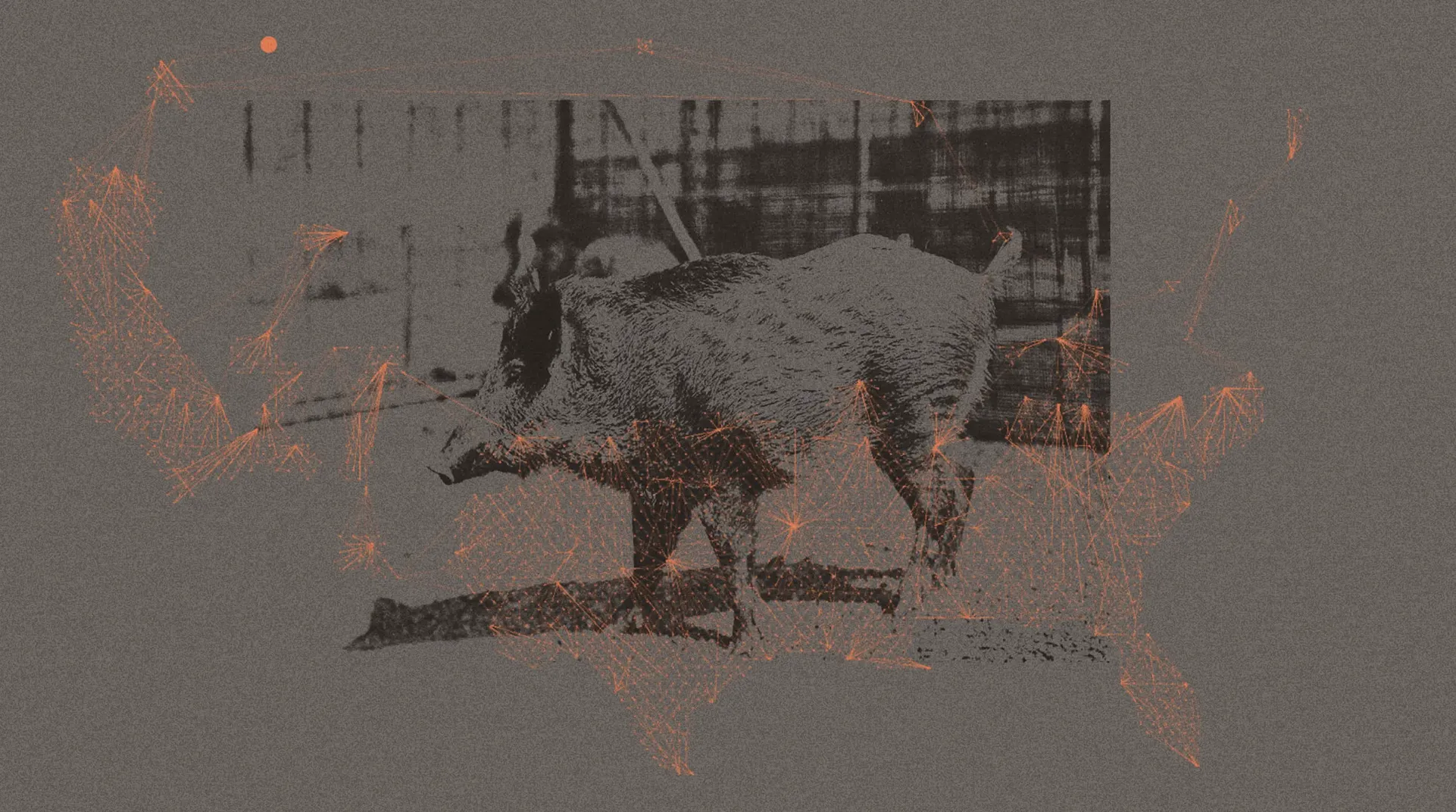July 30, 2024
Wild pigs are a seemingly unstoppable pestilence, but their threat could become exponentially more dangerous

Feral pigs eat crops and degrade water quality wherever they invade. (Photo by Adam Dixon, Ambrook Research)
When feral pigs invade the countryside, they go hog wild eating farm crops, tearing up the ground, prolifically reproducing and spreading diseases to other animals and humans. As if that scourge wasn't enough, federal officials are preparing for the possible arrival of African Swine Fever in wild hogs and its possible spread to domestic pigs and maybe even humans. The concern is so viable that officials and stakeholders have completed simulations to prepare for ASF, reports Michael Crowe of Ambrook Research. "For two days, groups discussed the ins and outs of emerging pig diseases like African Swine Fever and the potential for feral hogs to help spread them."
Highly contagious and deadly for all pig breeds, ASF cannot spread to humans yet, but its travels across the globe make it a human health and pork industry concern. "Researchers have warned the animals can serve as a reservoir that can spill over into domesticated herds. This makes feral pigs not just a damage concern, but a food security issue," Crowe writes. "It’s one of the top threats to U.S. pork production, which exported $7.7 billion of product in 2022."
Should ASF be detected in the United States, the protocol is simple: shut all pig operations down. Crowe explains, "A single infected domestic or wild pig could lead the Department of Agriculture to pause all live pig and semen shipments for 72 hours to try and contain it, a massive stoppage considering we have a million hogs on U.S. roads every day. And being shut out of international trade, even temporarily, is a serious concern."
Kevin Morgan from the Office of Health Security, part of the Department of Homeland Security, told Crowe, "We need to get better at shared awareness across borders because these types of emerging pathogens — there’s no line on a map that they respect. . . . We need to be on the same page on surveillance and early warning." Crowe reports, "Beyond building connections, officials are also looking to help producers protect their herds at a local level."
Currently, the USDA’s Animal & Plant Health Inspection Service is "running active ASF surveillance across 12 states — the entire U.S./Mexico border and the Florida Gulf Coast," Crowe reports. But there is no way for officials or scientists to predict how people will react.